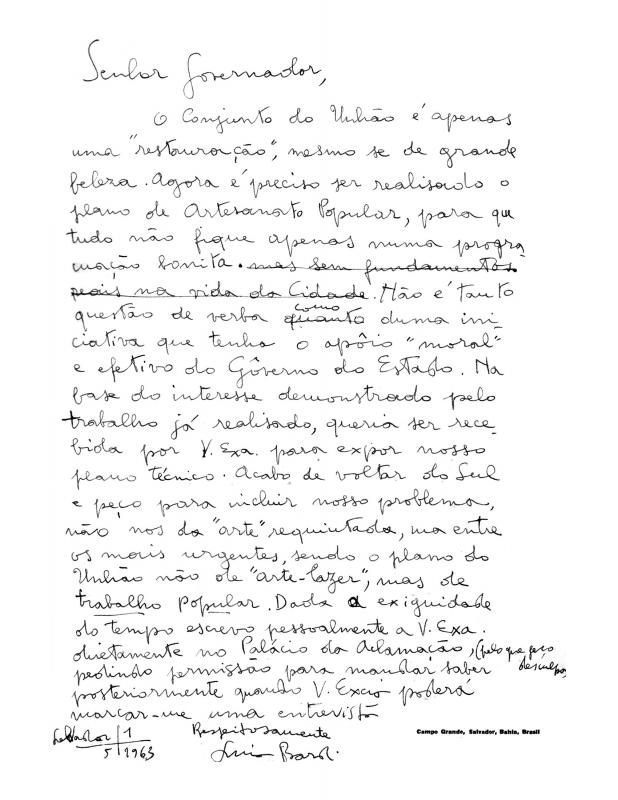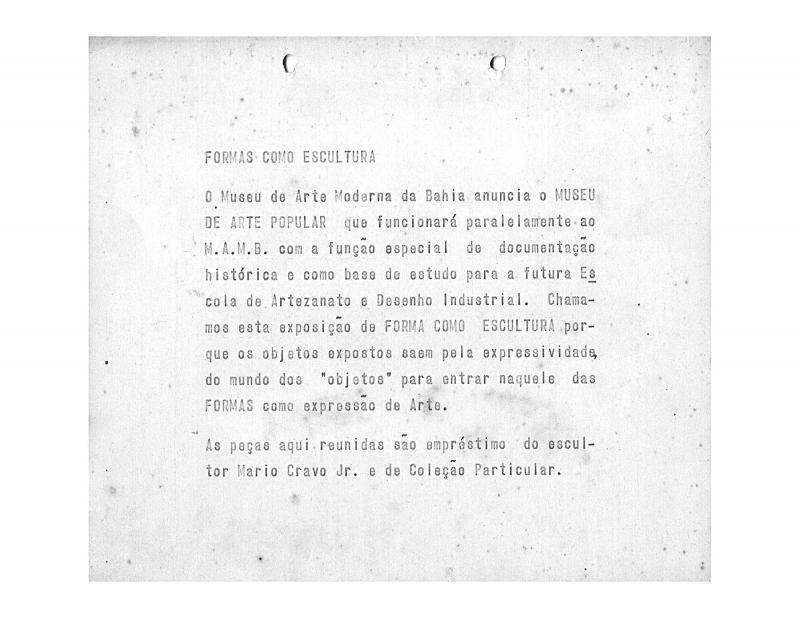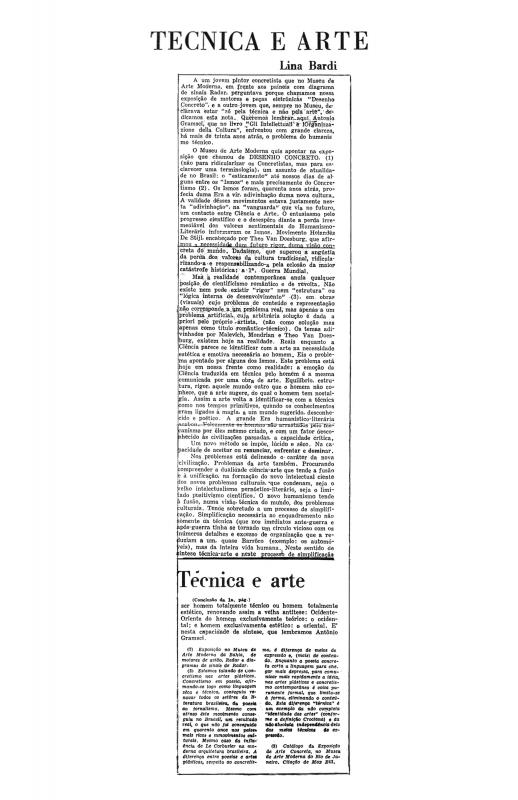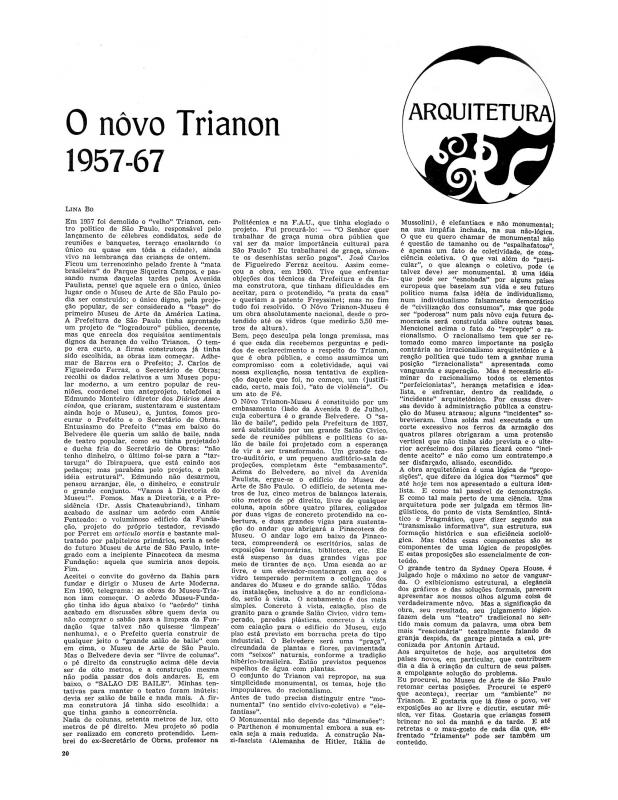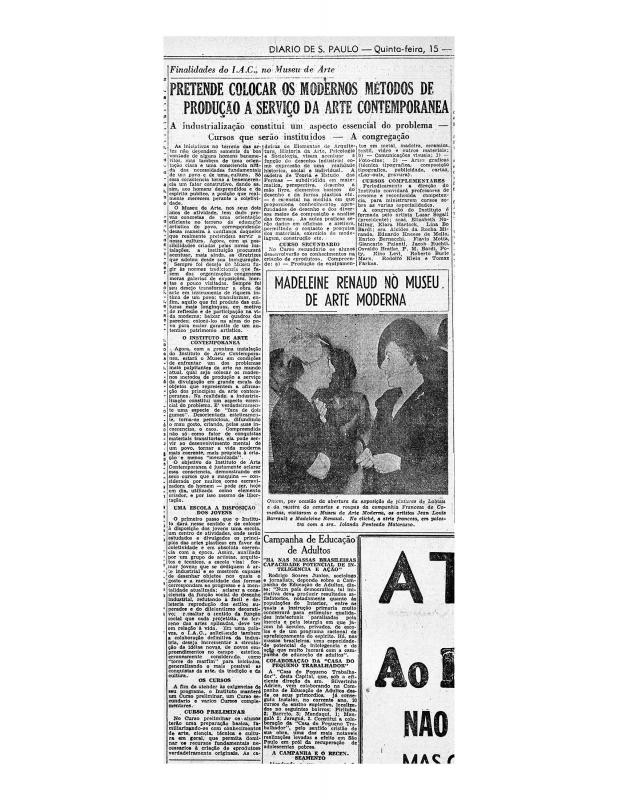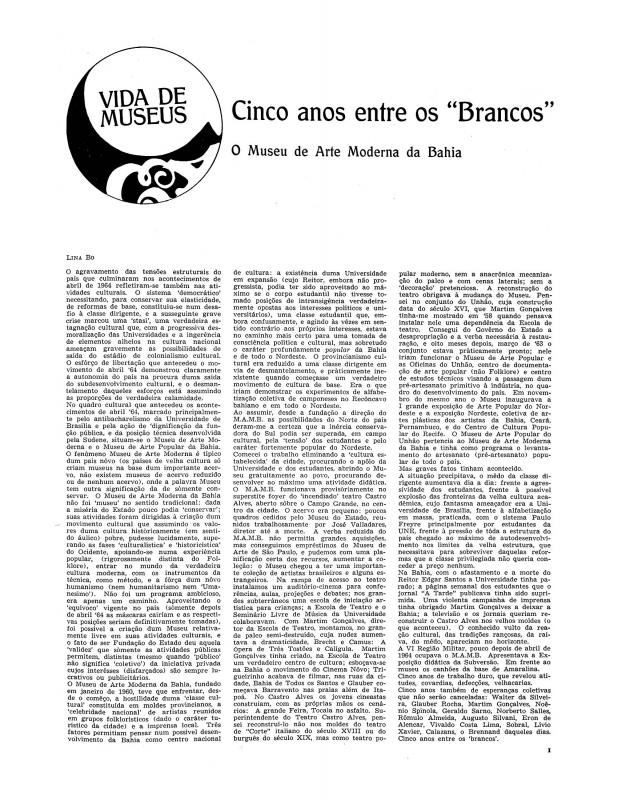The architect Lina Bo Bardi [née, Achillina Bo, 1914–1992] lived in Salvador (Bahia) from 1959 to 1964, where she was the director of the MAMB (Museu de Arte Moderna da Bahia). As had happened at the MASP in São Paulo—where she was in charge of program planning and teaching activities—her work at the MAMB consisted of organizing art history exhibitions and shows for contemporary and international artists representing various movements, and re-evaluating the traditional culture of the Brazilian “northeast.” Bo Bardi organized regular classes on art, music, cinema, and theater, and arranged for design and local handcraft workshops. She was a dynamic force in the art world in that part of the country, and helped local artists make contact with well-known figures in the contemporary arts community. The Museu de Arte Popular (MAP) opened in 1963, and housed works from different parts of the country. Some years later, for the MAP inaugural exhibition at the Solar do Unhão (Salvador, 1963), Bardi developed the ideas she had presented at her Bahia exhibition at the V Bienal de São Paulo (1959). In her opinion, the exhibition should have been called Civilização do Nordeste, explaining that the term “civilization” is understood as “all of human life.” The exhibition Civilização do Nordeste was presented for the inaugural and opened the MAP in Salvador.
Regarding the letter to the governor of Bahia seeking to implement the “Plano de Artesanato Popular” [see ICAA digital archive, doc. no. 1110865]. On that subject, see Lina Bo Bardi’s “O Museu de Arte Moderna da Bahia” (doc. no. 1110860); “Formas como escultura” (doc. no. 1110858); and “Técnica e arte” (doc. no. 1110861).
Lina Bo Bardi left Italy after the war and moved to Brazil. In the early 1950s she settled in São Paulo with her husband, the art dealerPietro Maria Bardi (1900–1999), who with the businessman Assis Chateaubriand, created the MASP (Museu de Arte de São Paulo). Lina took charge of Habitat, the MASP art magazine. The following year, in 1951, she and her husband started the industrial design course at the museum’s Institute of Contemporary Art, IAC (Instituto de Arte Contemporânea), where she also worked as a teacher.
On the matter of the decade it took to launch the MASP in São Paulo—an essential requirement for taking the MAMB concept to Bahia—see “O nôvo Trianon: 1957–67” (doc. no. 1111188). Also, on the subject of the São Paulo museum and school of industrial design, another example of Lina’s broad vision in her role as cultural administrator, see the following article of interest: “Finalidades do I.A.C., no Museu de Arte: pretende colocar os modernos métodos de produção a serviço da arte contemporánea” (doc. no. 1087137). Finally, Bo Bardi wrote a political article (with racist connotations) about her frustration following the military coup in Brazil (1964–1985) that was blocking many of her traditional, handcraft, academic, and music projects: “Cinco anos entre os ‘Brancos’: o Museu de Arte Moderna da Bahia” (doc. no. 1111192).

